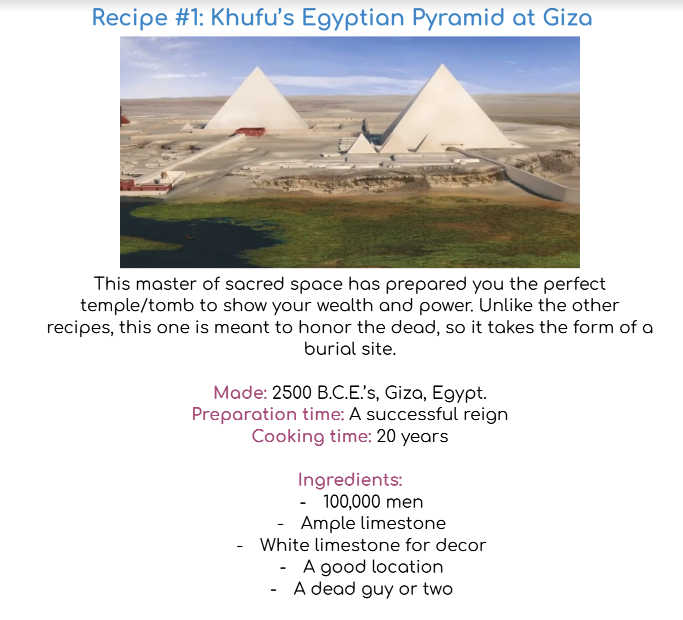Senior Andrew Hong stood in front of his class in October and started performing a rap about Ancient Rome, Egypt and Greece for his AP Art History project, saying, “My boy IMHOTEP [an Egyptian architect] stacked together a pyramid, manz said common fellas not admitted.”
Every year, students in Joel Tarbox’s AP Art History (APAH) class complete the Sacred Space project where students analyze artworks from various time periods. This year, students had to pick a sacred space — a special religious building from ancient societies honoring gods, goddesses and rulers — that was covered in class. So far, students have studied art from ancient Mesopotamia, Greece, Egypt and Rome.
The projects focus on the similarities and differences among these religious spaces as well as how they were influenced by other cultures. The opportunity to create something based on what students learned in class was a change of pace from their regular class structure, according to students interviewed by The Falcon.
“It was interesting to see all the different interpretations of these three cultures and other people’s presentations,” sophomore Natalie Poon said.
Though most of the class did slideshow presentations, some students tried more creative ideas. A more innovative project included a cookbook recipe created by senior Jo Bejar on the components of a sacred space. For example, the ingredients of the Roman Pantheon recipe made by Bejar included materials used to make the building, such as limestone and marble, and a list of instructions explaining how to assemble it.
Apart from the Pantheon in Rome, students also covered the Greek Parthenon, a temple dedicated to the wisdom goddess Athena, and King Tut’s tomb, a burial site for the youngest ruling pharaoh in history, in their projects. The sacred space project started in 2019.
“I think it’s a fun and interactive way for my students to learn about art and analyze it without having to sit through a lecture for an entire class period,” Tarbox said.
Beyond the Sacred Space project, Tarbox has plans for interesting future projects such as a Memorial project focusing on pieces that honor brave citizens in history, rather than just idolized figures.
“These projects help you understand the background of an art piece on a deeper level if you look at it from an art historian point of view,” Tarbox said. “Sometimes it provides you with a new perspective.”


























